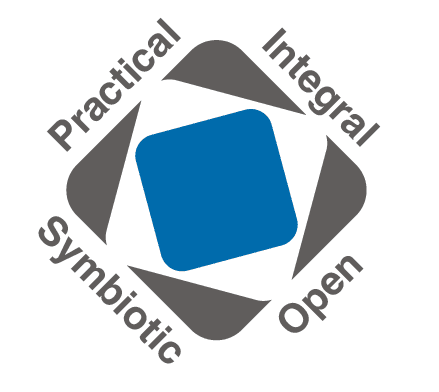A huge amount has happened recently. Following the official launch of CUBA on 1st of June, we have rolled out a new release, published our first article on a few Java sites and presented the platform at the Devoxx UK сonference in London. But before the rush continues, about it is an apt time to articulate the philosophy behind CUBA.
The first words associated with enterprise software development will probably be: slow, routine, complex and convoluted - nothing exciting at all! A common approach to combat these challenges is raising the level of abstraction - so that developers can operate with interfaces and tools encapsulating internal mechanisms. This enables the focus on high-level business requirements without the need to reinvent common processes for every project. Such a concept is typically implemented in frameworks, or platforms.
The previous CUBA article explained why CUBA is more than just a bunch of well-known open-source frameworks comprehensively integrated together. In brief, it brings declarative UI with data aware visual components, out-of-the-box features starting from sophisticated security model to BPM, and awesome development tools to complement your chosen IDE.
You can easily find more details on our Learn page, so instead of listing all of them I'll try to "raise the abstraction level" and explain the fundamental principles of CUBA.
Practical
The platform is a living organism, and its evolution is mostly driven by specific requests from developers. Of course, we constantly keep track of emerging technologies, but we are rather conservative and employ them only when we see that they can bring tangible value to the enterprise software development. As a result, CUBA is extremely practical; every part of it has been created to solve some real problem.
Integral
Apart from the obvious material features, the visual development environment provided by CUBA Studio greatly reduces the learning curve for newcomers and juniors. It is even more important that the platform brings a unified structure to your applications. When you open a CUBA-based project, you will always know where to find a screen, or a component inside of it; where the business logic is located and how is it invoked.
Such an ability to quickly understand and change the code written by other developers cannot be underestimated as a significant benefit to continual enterprise development. An enterprise application lifecycle may last tens of years and your solution must constantly evolve with the business environment, regardless of any changes in your team. For this reason, the flexibility to rotate, or scale up or down the team when needed, is one of the major concerns for the companies, especially those who outsource development or have distributed teams.
Open
One of the key principles of CUBA is openness. This starts with the full platform source code, which you have at hand when you work on a CUBA-based project. In addition, the platform is also open in the sense that you can change almost any part of it to suit your needs. You don't need to fork it to customize some parts of the platform - it is possible to extend and modify the platform functionality right in your project. To achieve this, we usually follow the open inheritance pattern, providing access to the platform internals. We understand that this can cause issues when the project is upgraded to a newer platform version. However, from our experience, this is far less evil than maintaining a fork, or accepting the inability to adapt the tool for a particular task.
We could also make a number of specific extension points, but in such case we would have to anticipate how application developers will use the platform. Such predictions always fail, sooner or later. So instead we have made the whole platform extension-friendly: you can inherit and override platform Java code including the object model, XML screens layout and configuration parameters. Transitively, this remains true for CUBA-based projects. If you follow a few simple conventions, your application becomes open for extension, allowing you to adapt the single product for many customers.
Symbiotic
CUBA is not positioned as a “thing-in-itself”. When a suitable and well-supported instrument already exists and we can integrate with it without sacrificing platform usability, we will integrate with it. An illustration of such integrations is full-text search and BPM engines, JavaScript charts and Google Maps API. At the same time, we have had to implement our own report generato from scratch, because we could not find a suitable tool (technology and license wise).
The CUBA Studio follows this principle too. It is a standalone web application and it doesn't replace your preferred IDE. You can use Studio and the IDE in parallel, switching between them to accomplish different tasks. WYSIWYG approach, implemented in Studio, is great for designing the data model and screens layout, while the classic Java IDE is the best for writing code. You can change any part of your project right in the IDE, even things created by Studio. When you return to Studio, it will instantly parse all changes, allowing you to keep on developing visually. As you see, instead of competing with the power of Java IDEs, we follow a symbiotic approach. Moreover, to raise coding efficiency, we’ve developed plugins for the most popular IDEs.
When we integrate with a third-party framework, we always wrap it in a higher level API. This enables replacing the underlying implementation if needed and makes the whole platform API more stable long term and less dependent on the constant changes in the integrated third-party frameworks. However, we don't restrict the direct use of underlying frameworks and libraries. It makes sense if CUBA API does not fit a particular use case. For example, if you can't do something via Generic UI, you can unwrap a visual component and get direct access to Vaadin (or Swing). The same applies for data access; if some operation is slow or not supported by ORM, just write SQL and run it via JDBC or MyBatis. Of course, such “hacks” lead to more complex and less portable application code, but they are typically very rare compared to the use of standard platform API. This knowledge of inherent flexibility and a sense of “Yes you can” adds a lot of confidence to developers.
Wide Use Area
We recommend using CUBA if you need to create an application with anything starting from 5-10 screens, as long as they consist of standard components like fields, forms, and tables. The effect from using CUBA grows exponentially with the complexity of your application, independent of the domain. We have delivered complex projects in financial, manufacturing, logistics and other areas. As an example, a non-obvious, but popular use case is using CUBA as the backend and admin UI, while creating the end-user interface with another, lighter or more customizable web technology.
I hope you will see some use cases of the platform for yourself, so in the next articles we’ll focus on “what's under the hood” – as we provide a detailed overview of the different CUBA parts.




